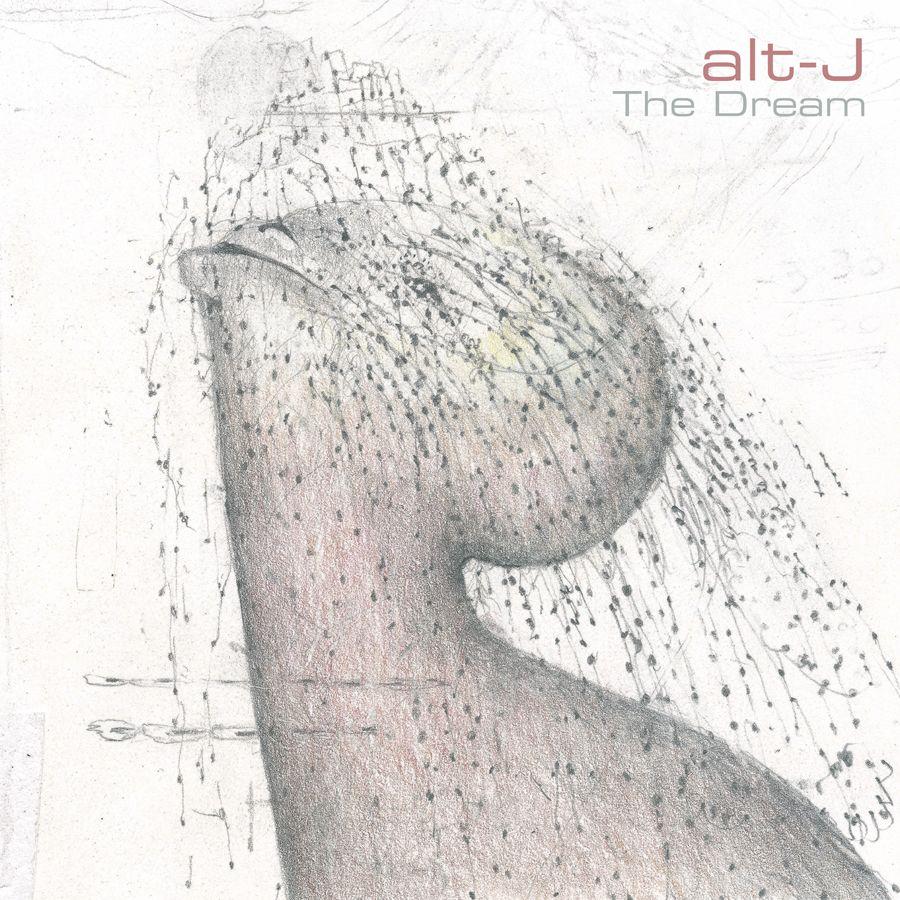★★★★☆
In their new album “The Dream,” alt-J analyzes memories you’ve never made and stories you’ve never told — and all in a way where listeners still understand everything on a deep level.
Alt-J, a British band comprised of Joe Newman, Thom Sonny Green, Gus Unger-Hamilton and Gwilym Sainsbury, recently gained traction after their 2014 song “Left Hand Free” was featured in the hit Netflix show “Outer Banks.”
The band has become known for their heavy drum and guitar beats accompanied by Newman’s distinctly haunting vocals that sound like the songs teenagers play on the way to the beach while hanging out the sunroof.
The band’s fourth studio album, “The Dream,” holds the same indie-rock feel of their most famous works, while implementing new instrumentation and lyrical nuances to create a 49-minute montage of life’s pinnacle stages and emotions.
The band’s previous works were slow and melodic, with quiet instrumentation that left the vocals as the primary focus. With this album, however, the band leaned into their new association as a thoughtful beach-rock powerhouse.
The album opens with “Bane,” an eerie tune accompanied by choral-like chants and a dramatic crescendo in the first minute. This first song sets up everything the rest of the album references. The comedic and innocent irony of selling one’s soul for a soda and a masterpiece of a backing track all set the listener up for a powerful trip — one that the rest of the album lives up to.
The album progresses through “U&ME,” a cheery anthem about summer romance that makes you want to sit by the pool with a smoothie, and “Hard Drive Gold,” a song more on the rock-side that showcases the immense talent of Unger-Hamilton and Sainsbury. But it’s not until “Happier When You’re Gone” that the lyrics shift from afterthoughts to the focus of the album—the harsh realities of life.
“Happier When You’re Gone” marks this shift from the nostalgia of past happiness to the realities of current life that can be difficult to deal with. The track features strings, with a violin quietly underscoring the pain of lines like “it’s not easy/homeslessness at home,” which feel like a punch in the gut after the upbeat ambiance of the first few tracks.
Alt-J doesn’t try to create an idyllic escape for its listeners. They frame the album around what life is really like, and it feels oddly comforting to not be experiencing a sugar-coated world.
The album continues to explore deeper and darker themes of addiction, loneliness, death and crime. The tracks of each song manage to perfectly match the mood, with a sinister organ playing as the narrator dies alone in “Philadelphia.”
While the lyrics in some tracks are forgettable and a bit repetitive, others manage to explore complex emotions. The stand-out of the album, “Get Better,” manages to encapsulate the grief of losing a loved one and the beauty of your memories with them in such a way that you don’t know whether to smile or cry.
“Front the garden bouquet, I threw it at the fire brigade/I was admonished and told to go back inside/ From the living room window/I stand and watch the white sheet go” has the capability to tear your heart into pieces, but somehow soon remedies it with “Your shyness stokes my boldness/‘Shall we go in?’ I smiled/Your hand warmed walking through the gallery.”
Through this experience of trauma and pain, “The Dream” also evokes hope. The album ends with “Powders,” an innocent story of teenage romance. The album almost goes in a circle, bringing us back into the sweet comfort of love and happiness before again flinging up into the unfortunate realities that interrupt our bliss.
These pains are not explicitly distressing. Each song has slivers of hope and comfort to remind us that life goes on, and always will. The nostalgia you feel while experiencing this album is not just one of beach days and sunshine, but also one of overcoming hardships and past tragedy.
“The Dream” reminds us that happiness cannot exist without sadness, but also that sadness will not last forever. These emotions cycle through our lives, but they do not define us. They merely help us appreciate the beauty of what we have, and what’s to come.
“The Dream” is a diary that each listener feels like they have written in. Listening to this album feels like a warm hug, steadfast amid all the pain, joy and uncertainty in life.














